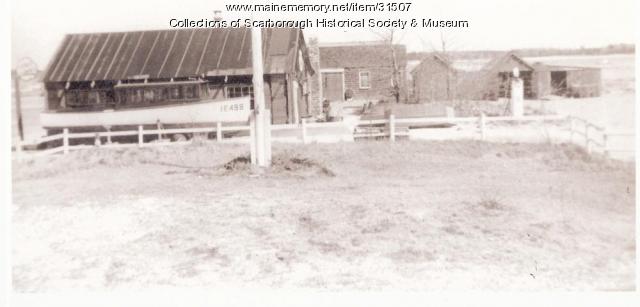Keywords: mast trade
- Historical Items (31)
- Tax Records (0)
- Architecture & Landscape (0)
- Online Exhibits (14)
- Site Pages (14)
- My Maine Stories (1)
- Lesson Plans (1)
Site Pages
These sites were created for each contributing partner or as part of collaborative community projects through Maine Memory. Learn about collaborative projects on MMN.
Site Page
View collections, facts, and contact information for this Contributing Partner.
Site Page
Historic Hallowell - Schooners, Steamers, Ships and Tankers
"Three-masted "terns" were a favorite rig of Canada's Maritime Provinces. The scow schooner, which used a schooner rig on a flat-bottomed, blunt-ended…"
Site Page
Historic Hallowell - Shipbuilding
"To construct the mast, they would get large wood and make a long and thick, pole-like object and then put smaller lengths of wood crossing the mast…"
Site Page
Historic Hallowell - Ship Parts
"Masts were made of really tall and perfectly straight trees. Masts took quite a bit of time, almost two years, until they were ready to be put on a…"
Site Page
Thomaston: The Town that Went to Sea - Thomaston Narrative
"… to England in order to load their hulls with masts from the local forests for the King’s fleet of ships back in England, and trade continued…"
Site Page
Thomaston: The Town that Went to Sea - The End of Wooden Shipbuilding - 1910 to 1950
"The wooden four-masted barkentine was built in 1919/1920 by Dunn and Elliot as a coal carrier. In 1928 when coal was eliminated as a cargo item, the…"
Site Page
Thomaston: The Town that Went to Sea - Shipbuilding
"… were transported back to England for use as masts in the King’s ships. Captain George Waymouth arrived in 1605 and left a cross where the river…"
Site Page
Thomaston: The Town that Went to Sea - Shipbuilding Industry Expands - 1850 to 1857
"Sparmakers fashioned masts, booms and yardarms. Blocks and tackle (the running rigging and gear used to work the sails of the boat) were configured…"
Site Page
Scarborough: They Called It Owascoag - Maritime Tales: Shipyards and Shipwrecks - Page 1 of 2
"… much of it with tall pines ideally suited for masts and straight boards for the ships of the King’s Royal Navy."
Site Page
John Martin: Expert Observer - Canoe race, Kenduskeag Stream, Bangor, 1865
"… tops of store houses vessels boats rafts vessels masts were litterally jamed." The canoes were labeled on each side with names Civil War-related…"
Site Page
"… last large schooner built in Thomaston was the 5-masted “Edna Hoyt,” built in 1920 at a cost of $280,000 by Dunn and Elliot Company."
Site Page
Surry by the Bay - Sawmills of Cunningham Ridge
"… Society From the coveted tall pine for ships' masts to the coastal cedar for shingles, Maine's forest land has been the source of the raw materials…"
Site Page
Blue Hill, Maine - Discover the Story of Blue Hill - Page 2 of 4
"… barks and full-rigged ships but most were two-masted brigs and schooners for the coastal trade. Captain Candage, one of 52 Blue Hill ship captains…"
Site Page
Skowhegan Community History - A Brief History of the Skowhegan Area
"In the 17th century the British Navy required masts constructed from the massive pine trees of Maine."














